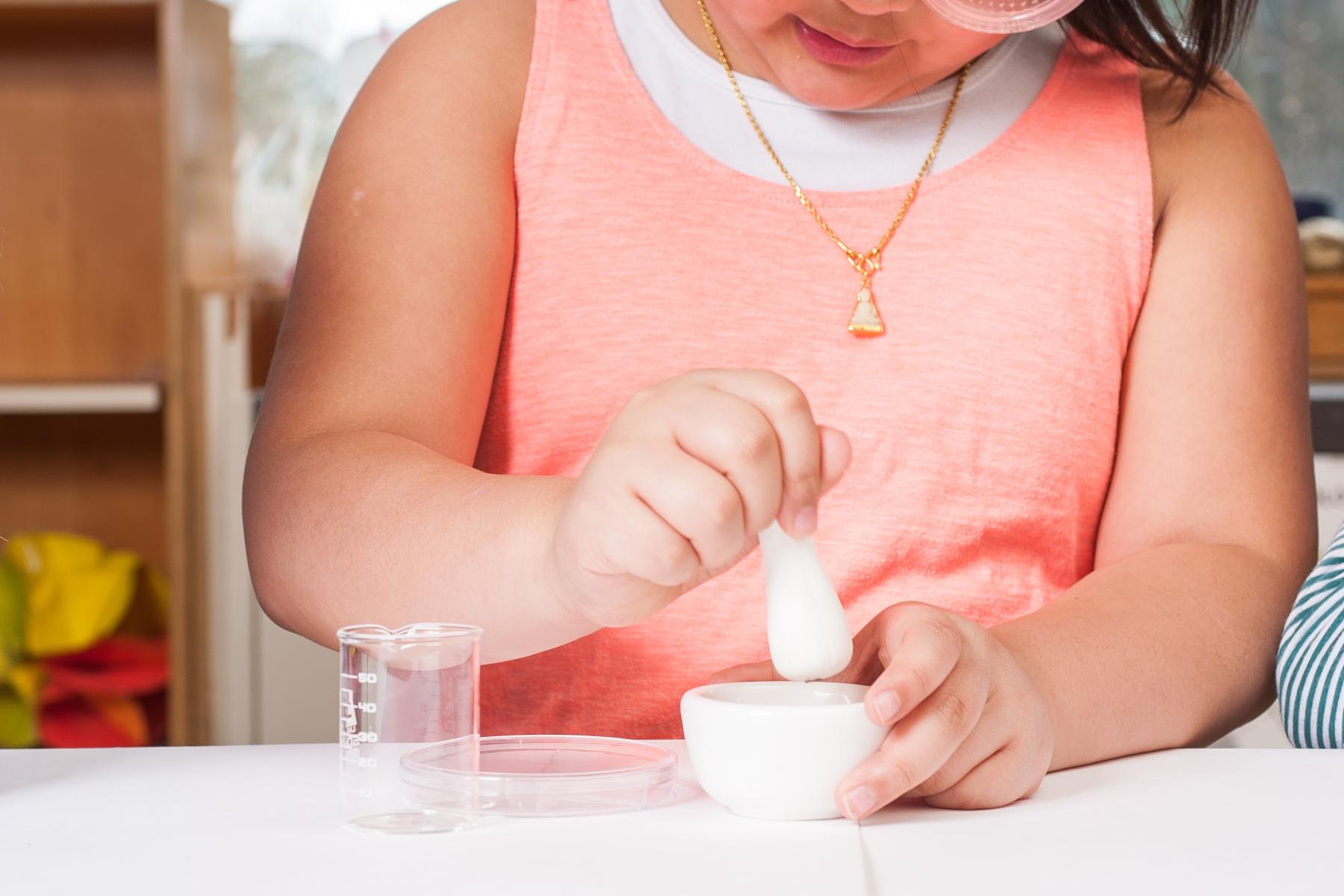DESCRIPTION
"Nature of Dye" allows participants to create their own dyes and art while exploring how chemicals interact, and how these interactions can have real-world applications. Participants predict, observe, and share what they notice as they experiment with the dye. What's your favorite color to mix?
DESCRIPTION
"Nature of Dye" allows participants to create their own dyes and art while exploring how chemicals interact, and how these interactions can have real-world applications. Participants predict, observe, and share what they notice as they experiment with the dye. What's your favorite color to mix?
TRAINING VIDEOS
OBJECTIVES
BIG IDEA
Chemists use tools to discover and make new things.
People shape the development and use of new materials and technologies.
LEARNING GOALS
Learners will develop positive attitudes toward learning about chemistry:
- Learners will increase their feelings of interest in chemistry through hands-on exploration and observations of phenomena.
- Learners will increase their understanding of the relevance of chemistry by exploring the applications and uses of chemistry and connections to everyday life.
- Learners will increase their sense of self-efficacy related to chemistry through hands-on interaction with real tools and materials.
DOWNLOAD FILES
- Nature of Dye activity guide (PDF)
- Nature of Dye activity sign (PDF)
- Nature of Dye facilitator guide (PDF)
- Nature of Dye cards (PDF)
- Nature of Dye pH scale (PDF)
- Nature of Dye mat (PDF)
- Cochineal Safety Data Sheet (PDF)
- Sodium carbonate Safety Data Sheet (PDF)
- Vinegar Safety Data Sheet (PDF)
- Nature of Dye activity guide (Spanish) (PDF)
- Nature of Dye cards (Spanish) (PDF)
- Nature of Dye activity sign (Spanish) (PDF)
- Nature of Dye mat (Spanish) (PDF)
- Nature of Dye pH scale (Spanish) (PDF)
Credits
Developed for the NISE Network with funding from the National Science Foundation under Grant Number DRL 1612482. Any opinions, findings, and conclusions or recommendations expressed in this material are those of the author(s) and do not necessarily reflect the view of the National Science Foundation. Any opinions, findings, and conclusions or recommendations expressed in this product are those of the authors and do not necessarily reflect the views of the Foundation.
Creative Commons Attribution Non-Commercial Share Alike 3.0 United States (CC BY-NC-SA 3.0 US).
View more details

NISE Network products are developed through an iterative collaborative process that includes scientific review, peer review, and visitor evaluation in accordance with an inclusive audiences approach. Products are designed to be easily edited and adapted for different audiences under a Creative Commons Attribution Non-Commercial Share Alike license. To learn more, visit our Development Process page.







